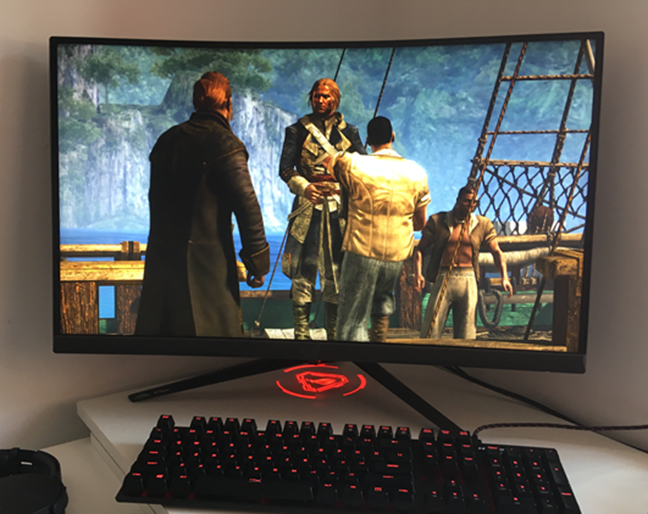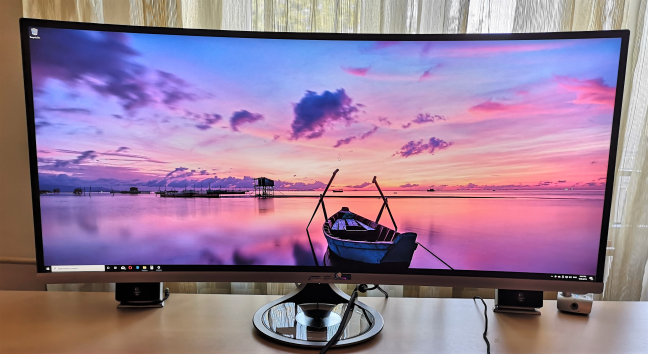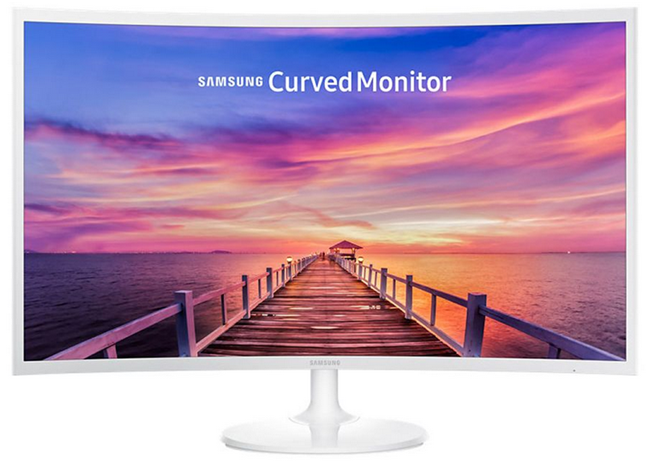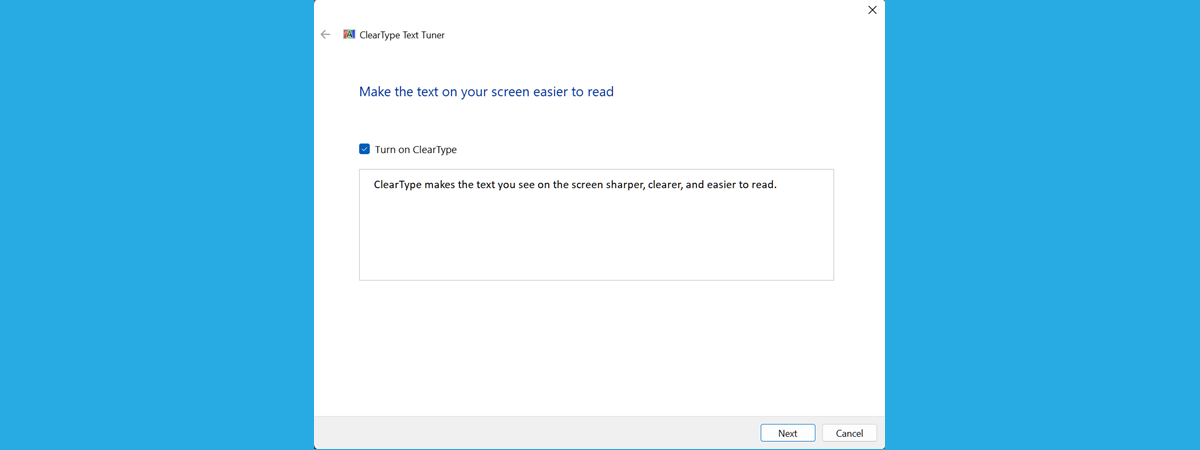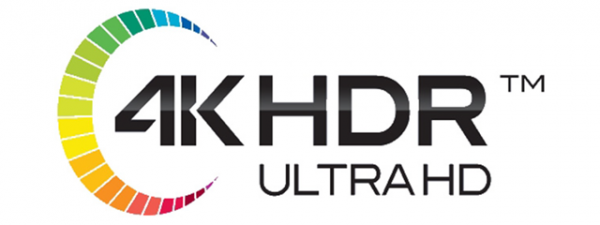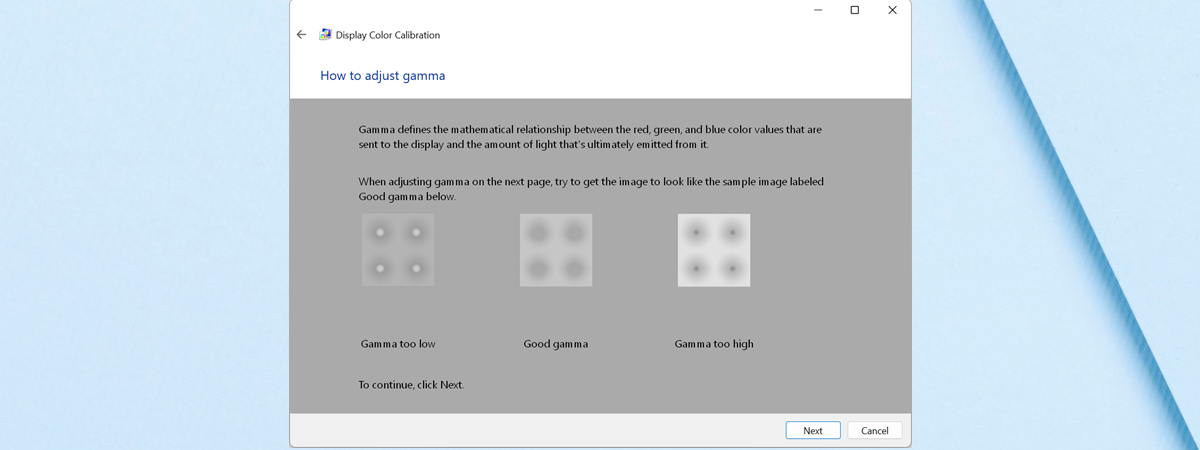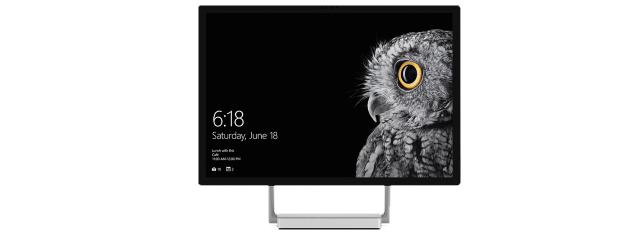
The last time when you searched the market for a TV or a computer monitor, did you encounter the terms TN, IPS, or VA? Did you wonder what those names mean and whether they matter? If you did, or if you just want to know why some screens are better than others, read this article. We explain the advantages and drawbacks of TN, IPS, and VA, and we also show you what types of displays have the best colors, which have the best contrast ratio, and which are the fastest.
What is a TN display?
TN comes from Twisted Nematic, and it's one of the oldest technologies used for creating LCD displays. The screens that use Twisted Nematic panels are more affordable than the ones that use other display technologies such as IPS or VA, but they also have many shortcomings. TN panels usually have poor color reproduction, and their viewing angles are limited, mainly in the vertical direction.
Twisted Nematic displays represent colors using just six bits per RGB channel, which sums up to a total of 18 bits. That's more than the common 16-bit per channel color representation, but it is less than the 24-bit per channel color representation. In other words, TN panels cannot reproduce all the 16 million colors available in the 24-bit RGB color space.
Furthermore, TN displays suffer from an aggravating form of brightness change and color shifting when the viewing angle changes. If you're wondering what that means, the answer is that the colors you see change dramatically depending on where you stand to view the screen. Unless you are looking at a TN display perpendicularly, staying right in front of it, the colors are not accurate. Move a bit to the left or to the right, or even worse, move up or down relative to a TN screen, and the colors change. Although newer TN panels are not as bad at this as the older ones, they still have this problem with color reproduction.
TN panels also have the significant disadvantage that when you touch them or press them with your finger, they usually lighten up in that area. It's an issue that makes TN panels useless for devices that rely on touchscreens, such as smartphones or tablets.
The only good important feature of Twisted Nematic panels, in terms of performance, is that they allow for faster pixel response times than other types of display panels. TN panels are the fastest of them all, as they can easily achieve 1ms pixel response times and 144Hz or higher refresh rates. This is probably the only reason why TN panels are used so much in gaming monitors.
What is an IPS display?
IPS is an acronym for In-Plane Switching and represents a newer technology for LCD screens. It was designed to circumvent the shortcomings of Twisted Nematic panels. IPS wanted to improve the poor color reproduction, as well as the brightness and color shift issues found in TN. It managed to do that by using a different implementation and arrangement of electrodes. Compared to Twisted Nematic, some of the electrodes used by In-Plane Switching are arranged differently and generate electric fields that are parallel to the glass plate. Unlike TN panels, the IPS displays offer the best color reproduction available for displays and also the widest viewing angles, which commonly go to up to 178 degrees. No matter where you're standing in front of an IPS display, the colors you see should look just as good.
Another advantage of IPS panels is that they can use up to eight bits for each RGB color channel, compared to TN, which can use only six. That means that you get 24 bits in total, so you get the full 16.7 million colors available in the 24-bit RGB gamut. That, plus their image quality and color accuracy, is why all Pantone Validated displays use IPS panels.
IPS panels also have a few drawbacks compared to TN panels: their pixel response times are longer, and it costs more to make them. When looking at displays that use IPS panels, you should expect to see values that start from 4ms and go up, and with refresh rates that are typically either 60Hz or 75Hz.
Because they offer great color reproduction and wide viewing angles, IPS screens are a popular choice for devices such as TVs, and also for computer monitors used by professionals and people who put image quality first on their priority lists. Together with AMOLED displays, IPS screens are also commonly used on touchscreen devices such as smartphones and tablets. However, due to the longer pixel response times of IPS, some gamers may avoid computer monitors based on IPS panels.
What is a VA display?
VA, which comes from Vertical Alignment, is a display technology that covers the middle ground between TN (Twisted Nematic) and IPS (In-Plane Switching). VA panels have better color reproduction than TN panels, but they don't manage to match the high standards set by IPS panels. VA panels also have wide viewing angles, similar to IPS, but do not usually manage the same fast pixel response times of TN. However, there are more than a few VA computer monitors these days that can get to 1ms pixel response rate.
Just like IPS, VA displays also have the ability to use 8 bits per RGB color channel, which means that they theoretically can cover the 16.7 million colors in the 24-bit RGB color space. That means that they are well above TN, although the colors are not as detailed as in IPS.
Unlike on TN or IPS displays, the liquid crystals found inside VA panels are aligned vertically to the glass plates. That's also the reason why VA is called Vertical Alignment. Furthermore, this also comes with the advantage of allowing very dark blacks: when the crystals are perpendicular to the glass, they don't let any light come out through them (no light equals black). Thus, one of the best things and also most marketed qualities in VA displays is their high contrast ratio.
The main disadvantage of VA displays is that they can suffer from color shifting, just like TN panels. That means that colors can change their appearance when you're changing your position in front of the screen.
The color quality, wide viewing angles, and the ability to reach 144Hz or higher refresh rates make VA panels an often used choice for gaming monitors, despite the fact that not all of them have the fastest pixel response times.
Which is the better display technology: TN, IPS, or VA?
We believe that IPS is better than VA, and VA is better than TN, if you're not a gamer. If you are a gamer, we tend to believe that our recommendations would be VA first, IPS second, TN last. Either way, we no longer recommend TN screens, unless you have a low budget and you don't mind its drawbacks. To sum everything up:
- IPS panels offer the best image quality and the widest viewing angles, but they are not fast (neither pixel response rate nor refresh rate)
- VA panels have great contrast ratio, good color reproduction, and wide viewing angles (close to IPS), but can suffer from color shifting and they're usually not as fast as TN panels
- TN panels are affordable and fast, but both their color reproduction and viewing angles are poor, and they suffer from color shifting
Do you prefer TN, IPS, or VA screens?
We hope that we have helped you get a clearer view of what these display technologies are about, and why some are better than others. Do you prefer image quality and choose to buy displays that have built-in IPS panels? Or do you like VA displays more? Would you even consider buying anything that uses TN panels? Tell us what you prefer and why, in the comments section below.




